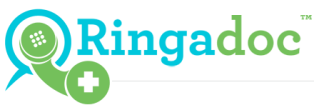 A Q&A with Ringadoc founder and CEO Jordan Michaels. The Los Angeles–based company was founded in 2010 and recently raised $750K in Seed funding. Investors include FF Angel and Curious Minds.
A Q&A with Ringadoc founder and CEO Jordan Michaels. The Los Angeles–based company was founded in 2010 and recently raised $750K in Seed funding. Investors include FF Angel and Curious Minds.
SUB: Please describe what Ringadoc is, and the value proposition you bring to healthcare.
Michaels: Ringadoc provides instant audio and video medical consultations with doctors over any basic phone, smartphone, tablet or computer. Our goal is to make healthcare accessible to anyone, anytime, anywhere.
SUB: Who are your target users?
Michaels: Everyone—our users generally fall into one of two categories: tech-savvy young professionals or senior citizens. Both groups have found that Ringadoc is easy to use, convenient and a time-saver. We’re looking to reach out to the underinsured, uninsured, and people in rural areas as well.
SUB: Who do you consider to be your competition?
Michaels: Teladoc and American Well. Of our competitors, they’re the oldest and most-established, and they’ve brought telehealth services to a number of larger corporations and organizations.
SUB: What differentiates Ringadoc from the competition?
Michaels: Technology. We believe that great technology can equalize the delivery of healthcare, and we’ve spent a lot of time honing in the look and feel of the software, making it the most intuitive telehealth experience possible for our users. Also, our approach. We focus on building a consumer product. Our consumers just happen to be doctors and patients. We didn’t create a product for a large healthcare organization, hospital, or payer but for individual patients and doctors. This is something very unique to our company. We avoided building a product to fit into a system we felt was fragmented and broken. Rather, we focused on building just a good consumer product.
SUB: When was the company founded and what were the first steps you took in establishing it?
Michaels: In 2010, I came up with the initial idea for Ringadoc and pitched it to a Los Angeles-based incubator called Curious Minds that was working on related concepts in telephonic technology. The incubator provided capital and put me in touch with a team of experienced entrepreneurs and software developers, who helped bring the idea to fruition. Later in 2010, the Health 2.0 Conference committee selected us as one of ten promising startups to demonstrate during the Launch! panel of their October 2010 conference. That’s when we launched the service to the general public.
SUB: What was the inspiration behind the idea for Ringadoc? Was there an ‘aha’ moment, or was the idea more gradual in developing?
Michaels: In my past life, I was a pre-med student at the University of Southern California. I did the whole pre-med thing—worked at Cedars-Sinai and the Los Angeles County/USC Medical Center, did research in cancer and neuroscience, and took it far enough that I got into several medical schools. Working alongside doctors, though, I noticed how broken the healthcare system really is. Doctors and patients have to jump through hoops to reach each other. It’s disheartening. I thought to myself, “There has to be an easier, better way for people to get the care they need.” And that’s when the idea for Ringadoc first started taking form in my mind. So I guess you could say the process was gradual. My past experiences firsthand in the medical community led me down a path of wanting to simplify a lot of the processes that seemed over-complicated and unnecessary. This laid the foundation for me in personally identifying how I would want to impact the field of medicine and that started with empowering patients to access care and physicians to provide care.
SUB: What have the most significant obstacles been so far to building the company?
Michaels: The biggest issue we have has to do with marketing and patient education. We’re tackling a problem that many people think can’t actually be tackled, because the healthcare system is so ingrained into the way we live. So, the entire concept of telehealth is new and a little weird to people, even though Ringadoc is so easy to use that it actually has an almost nonexistent learning curve. We’re still formulating the right angle to convince people of that.
SUB: You recently raised $750K in Seed funding. What are your plans for the funds?
Michaels: We’re very honored and excited to have the support of Founders Fund and Ryan Howard of Practice Fusion. The funding will go toward developing a new product for physicians to use in their practices and toward key hires in marketing and software development. From there, we will begin actively marketing our solution directly to doctors and patients that we think will be benefited by using Ringadoc.
SUB: Do you plan to raise more outside funding in the near future?
Michaels: Yes. We’re always looking for investors who understand our vision and determination to streamline healthcare.
SUB: What are your goals for Ringadoc over the next year or so?
Michaels: In addition to building out our team and increasing the size of the Ringadoc physician network, we would like to see a widespread adoption of our products from both physicians and patients. The goal is to really deliver a strong and convincing message and value proposition of our product so that individuals seeking healthcare and professionals providing healthcare have a firm understanding of exactly how much our product can help them in all aspects of their personal and professional lives.
Ringadoc – www.ringadoc.com











